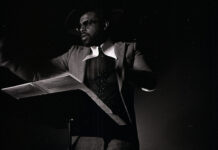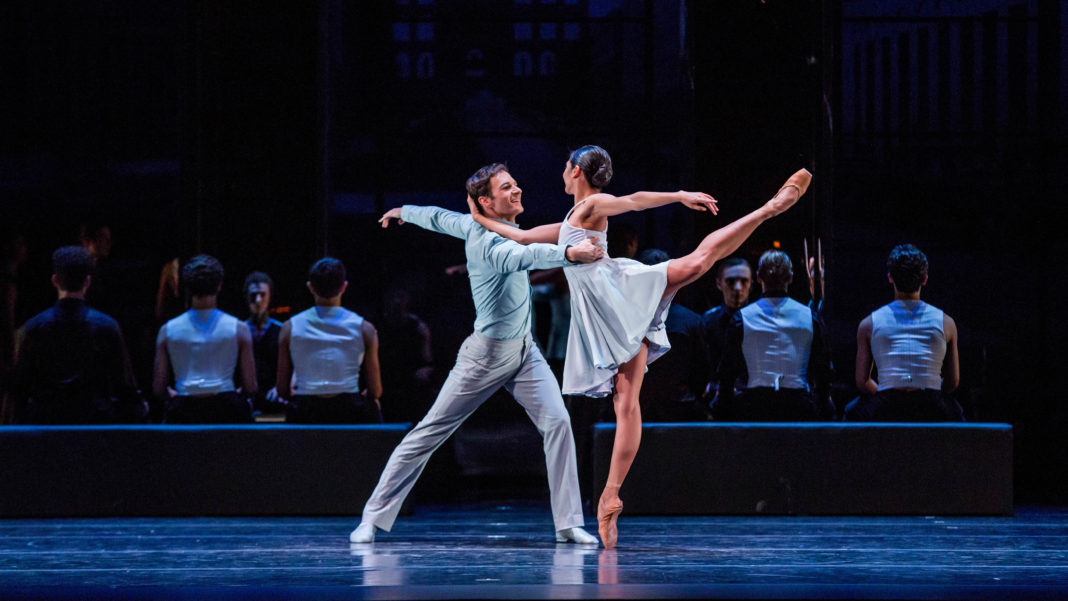“I remember when I first choreographed Romeo & Juliet,” says Polish choreographer Krzysztof Pastor via Skype from his home in Poland. “It was quite a long time after the Bosnian War in Europe. There was this famous story about a [Bosnian] Muslim girl and [Eastern Orthodox Serbian] Christian boy meeting on the bridge and they were both shot by the sniper.”
“I remember, because I was in Zagreb and was working in the theatre and we were actually bombed. I was wounded myself and a number of dancers were, too. We were just doing ballet. It was always somehow very strong in my mind this story on the bridge and then I was thinking that it’s typical Romeo & Juliet story.”
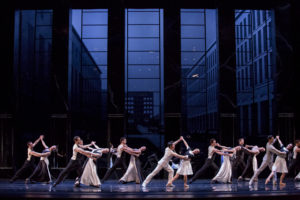
The production that comes from this inspiration is being presented starting tomorrow at the Dorothy Chandler Pavilion. The Joffrey Ballet is doing four performances of Pastor’s Romeo & Juliet. This production is set in 20th century Italy and begins in the 1930s and moves forward through the three acts. A live orchestra will be playing Prokofiev’s score.

Pastor, a former ballet dancer, is director of the Polish National Ballet. He is also the artistic director for Ballet Company of the Lithuanian National Opera and Ballet Theatre. This version of Romeo & Juliet was created for the Scottish Ballet in 2008.
Pastor believes strongly that Shakespeare’s story isn’t really about love. “Shakespeare wasn’t Italian,” he says, “but he wrote an Italian story. Well it’s not only Italy, but also for Poland, it’s also the United States. It’s not only the conflict, but also the victims of this conflict. For him, and for me, it was not just the love story. It’s an ongoing conflict that basically never ends. It’s timeless. That’s one of the reasons we tried to move in three periods of time and show that it could happen in the time of the Renaissance or it could happen in the 1920s, 1930s or 1990s. We don’t learn much.”
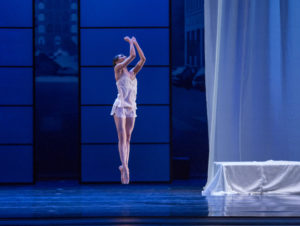
When speaking with Pastor, he feels that one key thing that is often left out of Shakespeare’s classic tale is how modern Juliet really is as a character. “What is also quite important is the conflict between the generations; the conflict between Juliet and her father. It think she was, in a certain sense, quite a progressive girl. She did not want to submit to her father. She was in love with Romeo and she didn’t want to marry Paris.”
As with Shakespeare, this ballet isn’t just about problems. There is that classic love story. Not only did Shakespeare find a brilliant way to tackle bigotry, but he also discovered that great love is doomed to fail in dramas and audiences will eat it up. Pastor has a few ideas as to why we are drawn to tragic love stories.
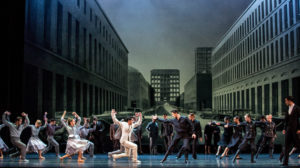
“I think it is a much stronger experience. Here the problem is why they had to die. Because they weren’t functioning in a very hostile environment. It is absolutely fascinating the only night they are together is full of passion. The next time they are together is when they are dying. It’s not only that it’s dramatic. It’s something more. They touch each other for the last time and they are aware of it. It’s a very moving scene.”
And Pastor says the Joffrey Ballet dancers were very liberated in how they rehearsed his ballet and the romance. “There are so many personalities. I totally enjoy working with them. There’s the balcony scene that finishes with the kiss. Every single rehearsal they were kissing 100%. I was looking at them thinking they were just incredible. In my company they would just fake the kiss in rehearsal. It’s not just the principal dancers, but the corps de ballet, they are all bringing something. Everyone has to create their own character, not just as dancers, but as people.”
Even though he finished creating this ballet in 2008, Pastor still sees things he’d like to change here and there. “I”m never 100% happy with my work. I would like to be. Each time when I come back to Romeo & Juliet, there are little changes, but I’m proud of my work. It’s not this romantic stereotype. It’s not sweet. It’s not just pretty dancing. I wanted to attach to another side of the story. I think that was quite challenging, but it also gave me and the dancers who understand this a lot of satisfaction.”
Production Photos by Cheryl Mann



